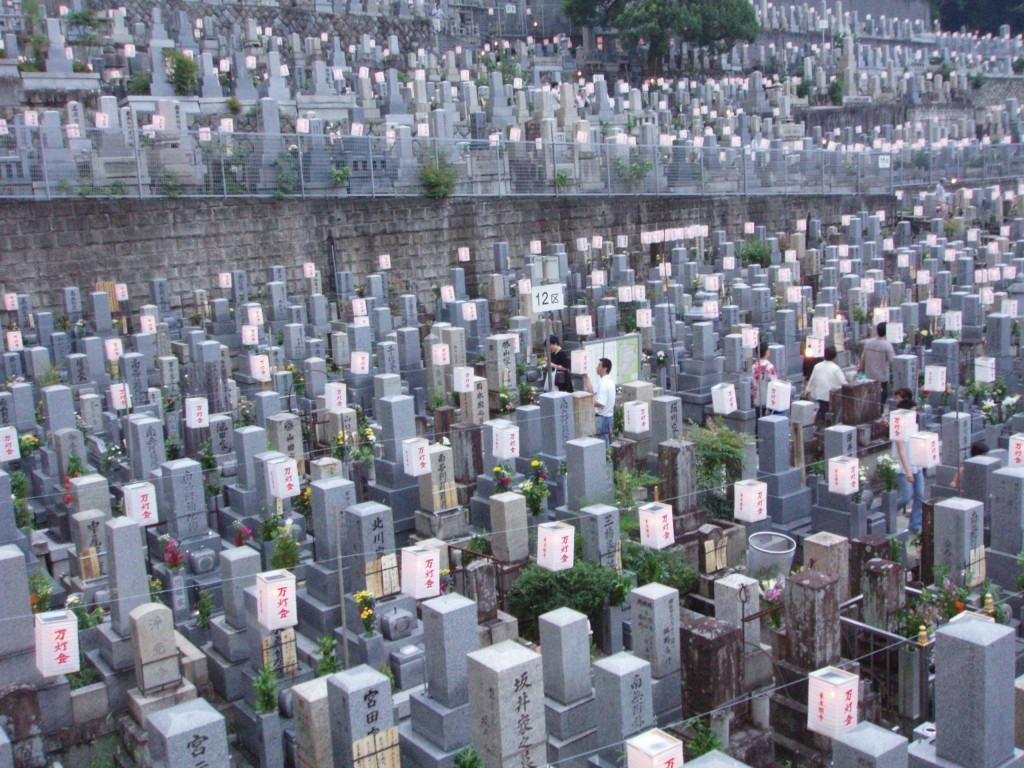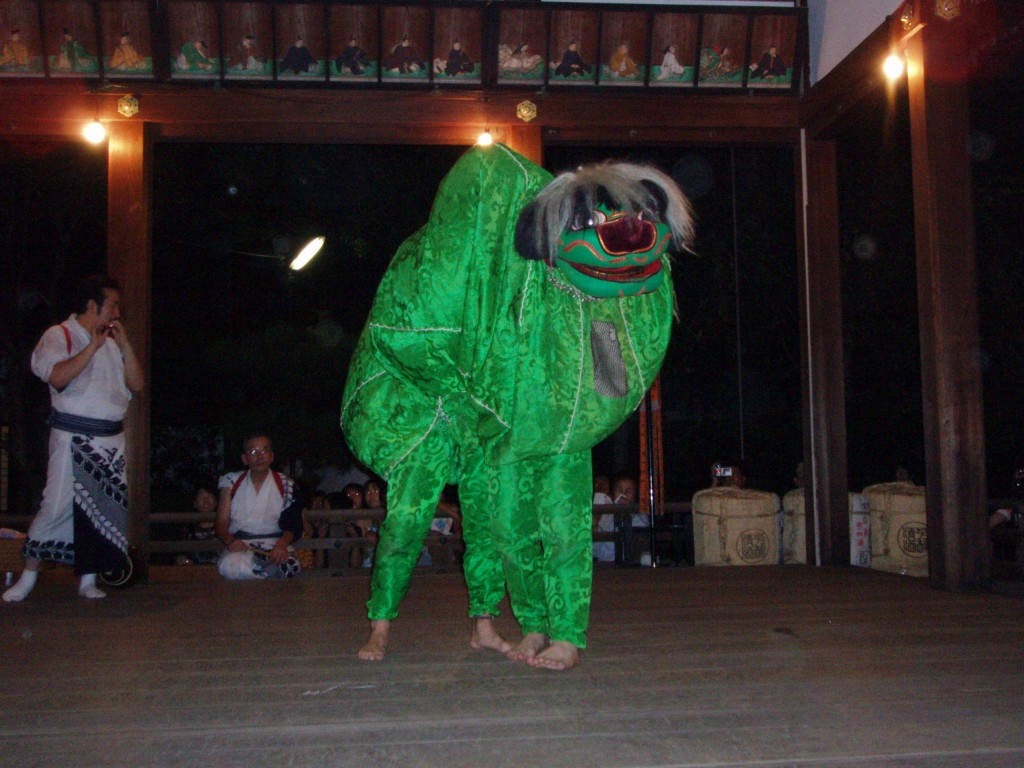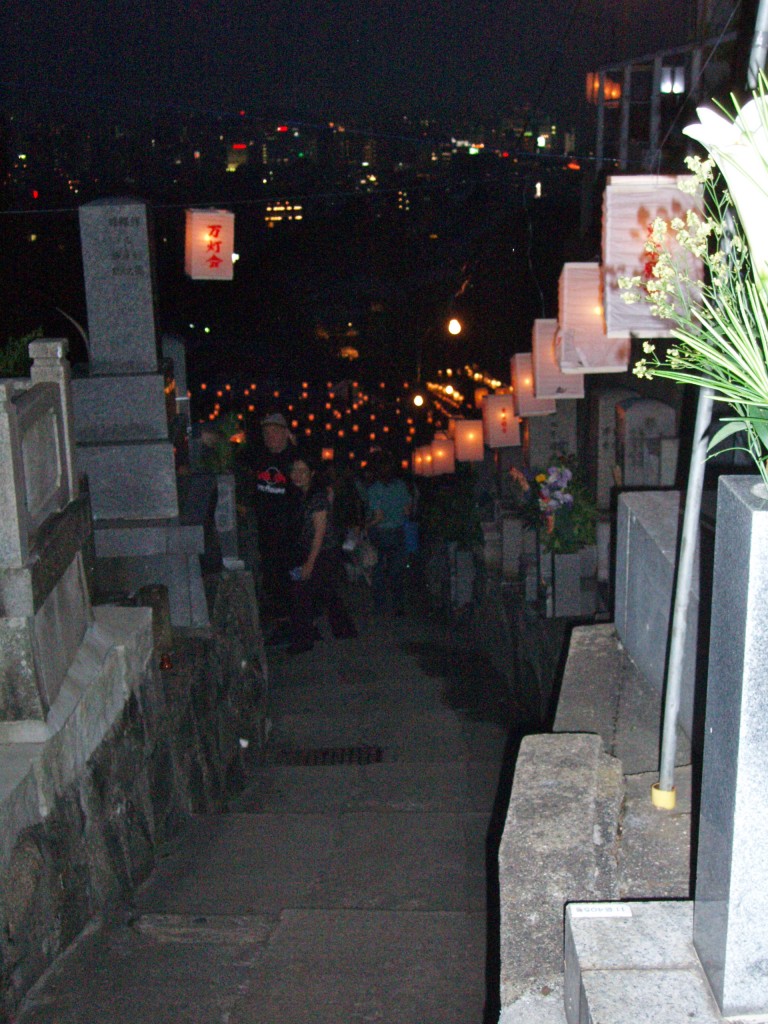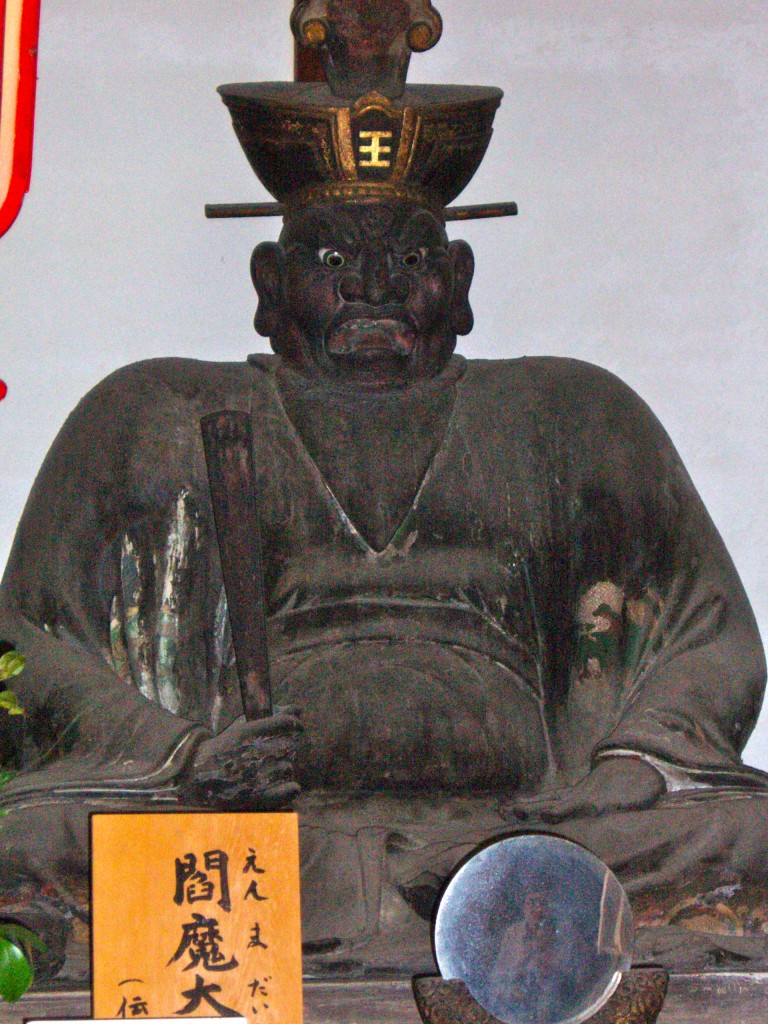
Day of the dead
Today being Halloween is a timely moment to think of the connections between the western tradition and that of Obon in Japan, which takes place in midsummer. Both centre around the spirits of the dead, but whereas Obon is seen as a friendly reunion with family ancestors, the Halloween custom focusses on eerie ghosts and spooky phantoms. However, its origins may well lie in pagan customs as suggested by the wiki entry for the festival of Samhain which follows below…
Samhain customs
The Samhain celebration marked the end of the harvest, it was considered to be a good time to slaughter animals because there was no longer any long grass for them to eat. The word “Samhain” appears in Irish literature from the 10th century onwards as an important date in the calendar, the time when fighting and trading were to stop and a good date for tribal leaders to gather their people together. The goings-on at those gatherings became a popular theme for Irish folktales.

Not a Halloween costume, but an eerie lion dance put on at Obon
The name Samhain means “summer’s end”. It marked the end of the “lighter half” of the year and the coming of the “darker half”. It is believed to have been the Celtic New Year, which would mean that many people would be thinking about their future and might have tried to find out what the coming year would have in store for them by means of magic.
Bonfires played a large part in the celebration of Samhain, as they still do in the celebration of Halloween in the Republic of Ireland and in the celebration of Guy Fawkes Night in the United Kingdom today. On the night of Samhain people and their animals would pass between bonfires as part of a cleansing ritual and the bones of slaughtered animals would be thrown onto the flames.
There does not appear to be any truth in the persistent modern rumor that Samhain was the name of ancient Celtic death deity, however, Samhain appears to have been a festival of the dead on which people believed that ghosts returned to their old homes. It has been suggested that the modern Halloween practice of dressing up in costumes originated in a Samhain custom. People are said to have disguised themselves either to frighten away evil spirits or to fool ghosts into thinking that the costume wearers were ghosts too, so that they would be left alone.
Samhain and All Saints’ Day
It is commonly held that Gregory III, who was pope between the years 731 and 741, fixed the date of All Saints’ Day on November 1 to Christianize the Samhain festival of the dead. However, the Christian All Saints’ Day appears to have been observed on November 1 in Britain since the 7th century and was officially celebrated on May 13 in the rest of Western Europe until the year 835.
Samhain celebrations today
For many Wiccans and neopagans today Samhain is an important religious festival. There are many different neopagan religions and the way these different groups celebrate Samhain can vary greatly. It is not unusual for neopagans to hold Samhain parties on October 31 which are largely identical to other Halloween parties.
****************************************
Here is Wikipedia’s take on Obon as opposed to Halloween….

Descent into the underworld (Kyoto at Obon)
Obon (also known as Bon or Bon Festival) is a Japanese Buddhist festival that has some similarities to Halloween. It is said that spirits of the departed return to Earth from the land of the dead during Obon and visit their old homes. The holiday probably has its origins in the Chinese Ghost Festival, although the manner in which the Japanese celebrate Obon is now quite different to the way in which the Chinese mark Ghost Festival.
The holiday has been celebrated in Japan for at least five hundred years. It is a summer festival which lasts for three days. The date on which it starts differs in different regions of Japan. Different municipalities adopted different dates for its start when the Western calendar was introduced to Japan in the 19th century. In most parts of Japan, Obon begins on August 15, in other areas, including Tokyo and Yokohama, it begins on July 15 and in some regions it begins on the fifteenth day of the seventh lunar month, the date of which varies in the Western calendar.
Obon is a time of year when people are supposed to honor their ancestors. Many families mark the occasion by visiting and cleaning their ancestors’ graves, as some people do on All Saints’ Day and All Souls’ Day in other parts of the world. As a result, Obon has also become a time of year for family reunions.
The last day of Obon is [often] marked by a ceremony in which illuminated paper lanterns are placed in a river and left to float downstream. The lanterns symbolically tell the spirits of the departed that it is time to leave the land of the living and return to the afterlife. The ceremony usually ends with a public fireworks display.
Although it is said that spirits of the departed return to Earth at Obon, it is not normally associated with evil spirits returning from the land of the dead. However, new horror movies are always released in Japan before Obon. Watching horror movies is a popular pastime around the time of Obon, largely because they give viewers a chill that helps to relieve them from the summer heat.
**************************************************
To read about the growing popularity of Halloween in Japan, click here. For ancestor worship and Obon, see here or here. For the Japanese way of coping with death, see here.

The fearsome Enma, lord and judge of the afterlife

Leave a Reply